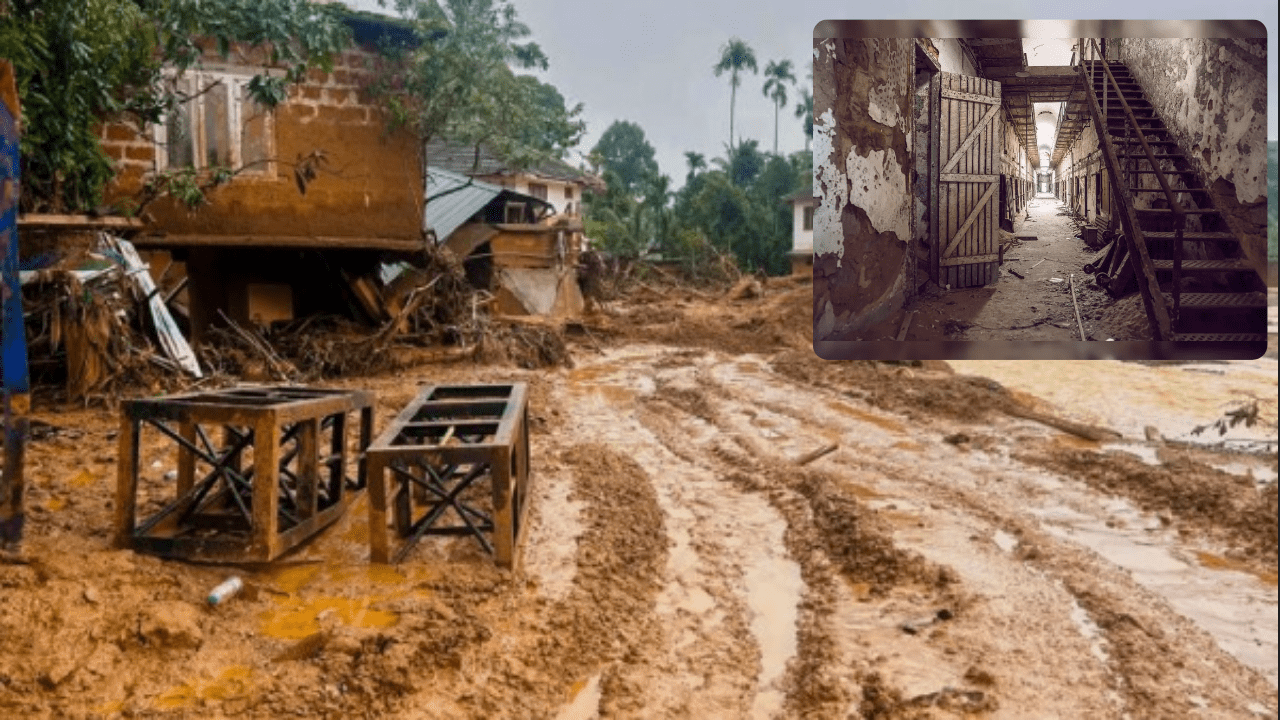Dark tourism in 2024 is not confined to India; it is a global phenomenon with numerous sites attracting visitors from around the world. Understand why people are drawn to sites of tragedy, from the Wayanad landslide to international destinations known for their historical and contemporary significance.

Dark tourism, a growing phenomenon where people visit places associated with death, tragedy, and suffering, has garnered significant attention recently. This form of tourism, also known as thanatourism, has its roots in human curiosity and a desire to understand and connect with the darker aspects of history and contemporary events.
The Concept of Dark Tourism
Dark tourism or Black tourism involves traveling to locations historically linked to death and tragedy. These sites can range from former battlefields and prisons to locations of natural disasters and catastrophic events. While the motivations behind dark tourism vary, they often include a desire to learn about history, pay respects, or seek a unique and emotionally intense experience.
Recent Events Highlighting Dark Tourism in 2024: Wayanad Landslide
Wayanad, known for its serene landscapes and tranquil ambiance, recently made headlines for a tragic reason. A devastating landslide claimed the lives of at least 150 people, leading the Kerala Police to issue a warning against dark tourism. The authorities urged people to stay away from the affected areas to not hinder ongoing rescue operations and to respect the gravity of the situation.
The landslide in Wayanad brought to light the increasing trend of people flocking to disaster sites out of curiosity. While the natural beauty of Kerala often attracts tourists seeking peace and relaxation, the tragic event showcased the darker side of tourism, where individuals are drawn to scenes of death and destruction.
Thanatourism Hotspots in India
India, with its rich history and diverse landscapes, has several dark tourism sites that attract visitors seeking to understand the country’s complex past and recent tragedies. Some notable thanatourism hotspots in India include:
- Jallianwala Bagh, Amritsar: This site commemorates the massacre of hundreds of unarmed Indian civilians by British troops in 1919. Visitors come to pay their respects and learn about this dark chapter in India’s struggle for independence.
- Cellular Jail, Andaman and Nicobar Islands: Known as “Kala Pani,” this prison was used by the British to exile political prisoners during India’s fight for independence. The site now serves as a memorial to the sacrifices made by freedom fighters.
- Bhuj, Gujarat: The devastating earthquake of 2001 left a lasting impact on Bhuj. Visitors come to witness the aftermath and understand the resilience of the local community in rebuilding their lives.
- Kedarnath, Uttarakhand: The 2013 flash floods and landslides in Kedarnath resulted in significant loss of life and property. The region, known for its religious significance, now also stands as a reminder of nature’s fury.

Global Hotspots for Dark Tourism
Dark tourism is not confined to India; it is a global phenomenon with numerous sites attracting visitors from around the world. Some prominent international dark tourism destinations include:
- Auschwitz-Birkenau, Poland: This former Nazi concentration camp is one of the most visited dark tourism sites globally. It stands as a grim reminder of the Holocaust, where millions of Jews and other minorities were systematically exterminated.
- Chernobyl, Ukraine: The site of the 1986 nuclear disaster has become a popular destination for dark tourists. Visitors explore the abandoned city of Pripyat and learn about the catastrophic event and its long-term effects.
- Hiroshima, Japan: The Peace Memorial Park in Hiroshima commemorates the victims of the atomic bomb dropped during World War II. The site includes a museum that educates visitors about the horrors of nuclear warfare.
- Ground Zero, New York City, USA: The site of the September 11, 2001, terrorist attacks is a place of reflection and remembrance. The 9/11 Memorial and Museum provide insights into the tragedy and its aftermath.
- Pompeii, Italy: The ancient city of Pompeii, buried by the eruption of Mount Vesuvius in AD 79, offers a unique glimpse into the lives of its inhabitants and the sudden disaster that befell them.
Why People Engage in Dark Tourism
Understanding the motivations behind dark tourism is complex. Several factors contribute to the appeal of visiting sites associated with death and tragedy:
- Historical Curiosity: Many dark tourists are driven by a desire to learn about significant historical events and understand their impact on contemporary society.
- Emotional Connection: Visiting sites of tragedy can evoke strong emotional responses, allowing individuals to connect with the past on a deeper level.
- Educational Value: Dark tourism sites often serve as educational resources, providing insights into historical events, natural disasters, and human behavior.
- Memento Mori: The Latin phrase “memento mori” translates to “remember that you will die.” Dark tourism can serve as a reminder of the fragility of life and the inevitability of death.
- Respect and Remembrance: Many visitors engage in dark tourism to pay respects to the victims of tragedies and honor their memories.
Ethical Considerations in Dark Tourism
While dark tourism offers educational and emotional value, it also raises ethical concerns. It is essential for tourists to approach these sites with respect and sensitivity. The following considerations are crucial:
- Respect for Victims: Tourists should honor the memory of the victims and avoid behaviors that could be perceived as disrespectful.
- Impact on Local Communities: Visitors should be mindful of the impact their presence may have on local communities, particularly in areas recovering from recent tragedies.
- Supporting Preservation Efforts: Contributing to preservation and educational initiatives at dark tourism sites can help maintain these locations for future generations.
- Avoiding Sensationalism: Tourists should resist the urge to sensationalize or trivialize the suffering associated with dark tourism sites.
In Short
Dark tourism, with its complex motivations and ethical considerations, continues to attract a growing number of travelers. From the recent landslide in Wayanad to global hotspots like Auschwitz and Chernobyl, these sites offer unique opportunities for learning and reflection. As this trend evolves, it is crucial for tourists to approach dark tourism with sensitivity and respect, ensuring that the stories of tragedy and resilience are honored appropriately.
Read Next:

The Psychology of Love: Why Valentines Day Matters More Epic Than You Think
Discover the psychology of love and why Valentines Day is more important than you think. Learn how love impacts the brain, strengthens relationships, and boosts

Premier League Highlights: Arsenal Humiliate Man City 5-1, Spurs and Palace Secure Crucial Wins
Arsenal demolished Manchester City 5-1 in a statement premier league highlights win, reigniting their title hopes. Meanwhile, Crystal Palace stunned Man United 2-0, and Tottenham

How Budget 2025 Impacts the Indian Middle-Class: Major Tax Benefits and Glaring Omissions
Budget 2025 offers major tax relief to the middle class, including zero tax on incomes up to ₹12 lakh. However, it misses out on incentives

Degrees vs Employability: Why “Highly Qualified Degree Holders” Struggle to Find Jobs While “Less Qualified Individuals” Get Hired Faster!
Many highly qualified individuals struggle to secure jobs, while less qualified candidates get hired quickly. This Degrees vs Employability paradox is caused by employer preferences,

The Power of Mindset: Why Looking Poor Doesn’t Make You Poor, but Thinking Poor Does!
Discover why looking poor doesn’t define your wealth but thinking poor does. Learn the power of mindset and how a growth-oriented mindset can lead to

Overthinking: How It’s Damaging Today’s Youth – Causes and Cure in 2025
Understanding how overthinking is silently damaging today’s youth, from its causes rooted in societal pressure and social media to its long-term effects on mental health.
